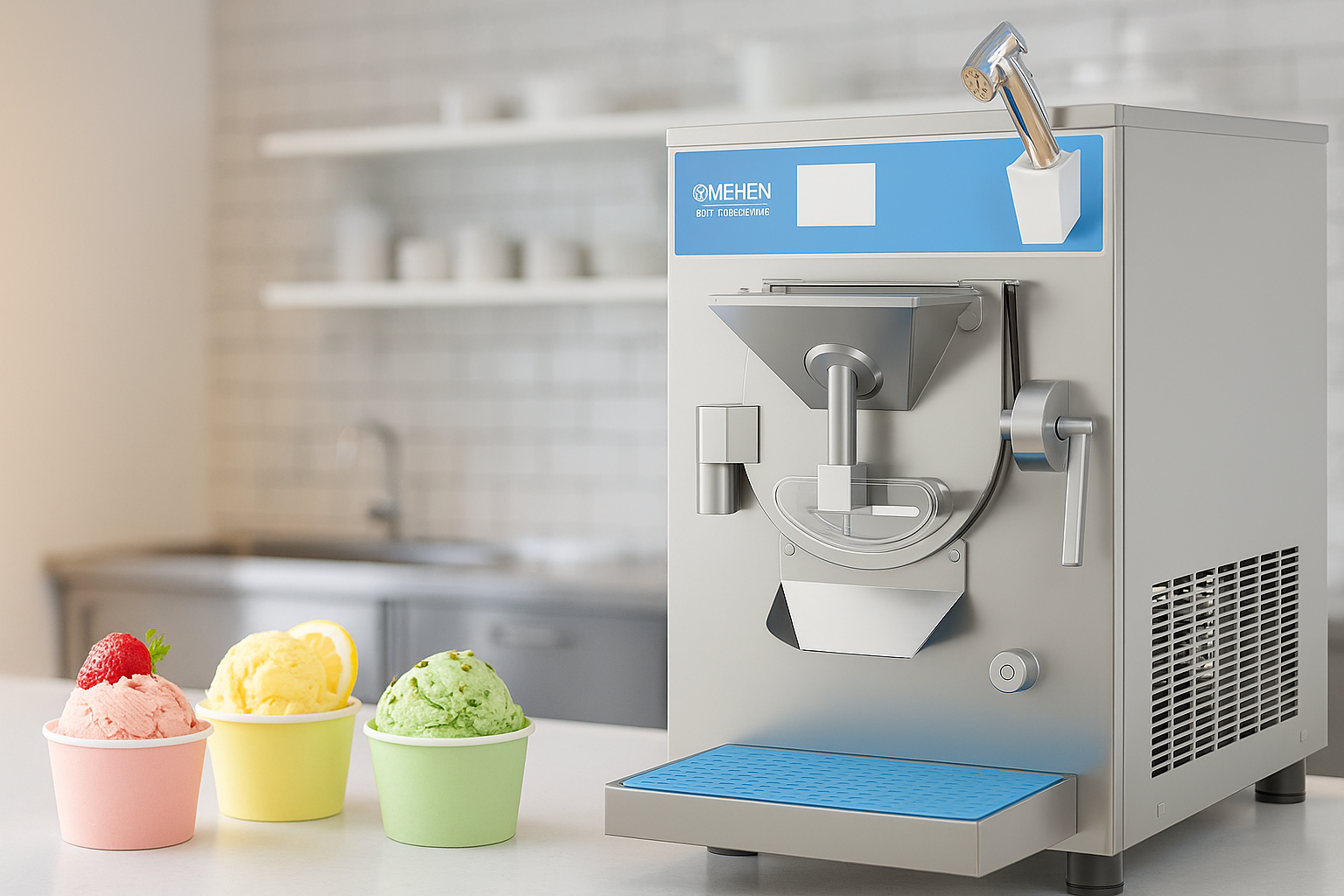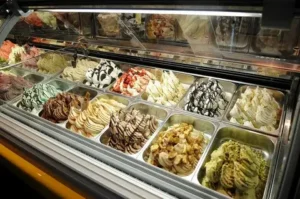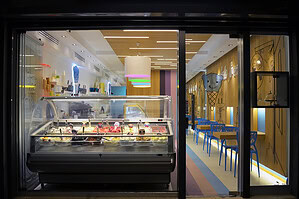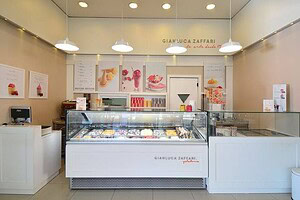Introduction
With the rapid growth of Indonesia’s frozen dessert market, gelato shops are transitioning from small artisanal setups to standardized production facilities. This article focuses on three core topics: gelato pasteurizing machine (for heat treatment and microbiological safety), Italian gelato machine commercial (integrated or stand-alone professional solutions), and gelato machine Indonesia (localized procurement and after-sales service).
We provide actionable checklists, comparison criteria, and compliance notes — ensuring the content is helpful, people-first, and aligned with the latest Google Search policies.
1. Key Concepts and Process Flow
-
Pasteurizing Machine: Heats, holds, and cools raw mixes to reduce microbiological risks and stabilize emulsification. Common capacities: 30–120 L per batch, with industrial lines reaching 300 L.
-
Batch Freezer: Rapidly freezes pasteurized mix while incorporating air (overrun) for smooth texture.
-
All-in-One Machines (Italian Gelato Machine Commercial): Combine pasteurizing, cooling, and freezing in a single unit. Great for small shops with limited space, though maintenance complexity and downtime risks are higher.
2. Selection Checklist for Gelato Pasteurizing Machines
Key criteria to evaluate:
-
Capacity (L/Batch): Match peak demand to cycle time to avoid overloading.
-
Heating/Cooling Curve: Target 85 °C/30 min or equivalent; cooling to 4 °C as fast as possible.
-
Agitation & Shear: Motor drive, blade material, and sealing design.
-
Cleanability (CIP/SIP): Number of detachable parts and dead zones.
-
Energy & Noise Levels: kWh per batch and decibel rating.
-
Regulatory Compliance: Food-grade materials, calibration records, HACCP logs.
For Italian gelato machine commercial systems:
-
Refrigerant type (eco-compliance).
-
Continuous output and redundancy.
-
Digital controls (recipe storage, temperature logs).
-
Spare parts and service availability in Indonesia.
-
Hygienic design (welding quality, drainage slope).
3. Gelato Machine Indonesia: Local Procurement Considerations
-
Import & Distributor: Prioritize suppliers with local service teams in Jakarta or Surabaya; confirm spare parts inventory and lead times.
-
Electrical & Climate Adaptation: Machines should match 220–240 V single-phase / 380 V three-phase supply; tropical humidity requires reinforced cooling and anti-corrosion.
-
After-Sales: Clarify installation, operator training, and warranty milestones.
-
Food Safety Records: Prefer machines with integrated temperature and time logging for easier audits.
4. Budgeting & TCO (Total Cost of Ownership) Framework
-
CapEx: Equipment, shipping, customs, installation.
-
OpEx: Energy, water, consumables, spare parts, downtime.
-
Depreciation & Expansion: Scale capacity to avoid early reinvestment.
-
Compliance Costs: HACCP records, annual probe calibration, staff training.
5. Six Steps from Pilot to Full-Scale Production
-
Prototype testing with 3–5 signature recipes.
-
Daily/weekly/monthly sanitation SOPs.
-
Energy and capacity stress testing under weekend peak load.
-
Quality logs: temperature, Brix, viscosity, sensory checks.
-
Operator training: temperature control, valves, cleaning.
-
30/60/90-day performance review and adjustments.
6. Compliance & SEO Strategy
-
Search Essentials: Ensure crawlability, indexability, and user-first value.
-
Helpful Content (core ranking system since 2024): Avoid content written “for search engines only”; focus on originality and expertise.
-
Product Reviews & Comparisons: Provide first-hand test data, pros/cons, and clear limitations.
-
Structured Data: Use
Productmarkup for equipment specs andFAQPagefor Q&A; always ensure alignment with visible content. -
Page Experience: Optimize for Core Web Vitals (LCP, CLS, INP).
-
Avoid Spammy Practices: No expired-domain abuse, scaled thin content, or reputation abuse.
-
AI-Assisted Content: Permissible if it’s helpful, accurate, and demonstrates E-E-A-T.
7. Example Comparison Table (Extract)
| Brand/Model | Category | Capacity (L/Batch) | Heating/Cooling Curve | Power (kW) | Noise (dB) | Cleaning Time (min) | After-Sales SLA | Price Range (IDR) |
|---|---|---|---|---|---|---|---|---|
| YourBrand GP-60L | Pasteurizing Machine | 60 | 85°C/30min → 4°C ≤60min | 3.5 | 65 | 20 | 48h response (Indonesia) | 120–150 juta |
| BrandX Combo 40L | Italian Gelato Machine Commercial | 40 | 85°C/25min → 4°C ≤50min | 4.2 | 70 | 25 | 72h response (ASEAN) | 160–190 juta |
| BrandY Industrial 120L | Pasteurizing Machine | 120 | 85°C/35min → 4°C ≤70min | 7.0 | 72 | 30 | 24h response (Factory Direct) | 300–350 juta |
8. Frequently Asked Questions (FAQ)
Q1: Should a small shop invest in a pasteurizing machine first or a batch freezer?
A: For very small volumes, an all-in-one machine is practical. For daily peaks above 100 L or diverse menus, separate pasteurizing and freezing units are recommended for flexibility and redundancy.
Q2: What’s the difference between an Italian gelato machine commercial and a soft-serve machine?
A: Gelato requires lower serving temperatures and higher solids. Machines must support programmable heating/freezing curves and specific overrun control.
Q3: What are the key maintenance points for Indonesia’s humid climate?
A: Condenser cleaning, seal integrity, and electrical cabinet dehumidification are critical. Preventive routines should include weekly dusting, monthly probe calibration, and quarterly sealing checks.




